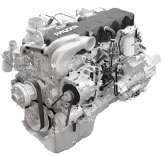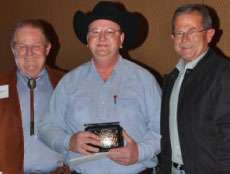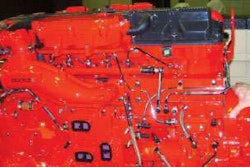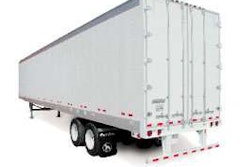 Paccar’s MX diesel engine will be installed in Kenworth and Peterbilt trucks this summer.
Paccar’s MX diesel engine will be installed in Kenworth and Peterbilt trucks this summer.Paccar introduced its new MX diesel engine that will be installed in Kenworth and Peterbilt trucks this summer, available with a range of 380 to 485 horsepower and torque outputs up to 1,750 lb-ft. Paccar says this power range – combined with excellent fuel efficiency, high reliability, durability, lightweight design and low cost of ownership – makes it suitable for both over-the-road linehaul and vocational applications. The MX uses selective catalytic reduction in combination with exhaust gas recirculation to meet the Environmental Protection Agency’s 2010 diesel engine emissions regulations.
“We look forward to delivering our integrated and optimized best-in-class drivetrain to our customers,” says Craig Brewster, Paccar assistant vice president.
Paccar designed and manufactured the engine’s block and cylinder head using high-strength compacted graphite iron. According to Brewster, this “premium” material is more durable and lighter than conventional gray iron, resulting in superior power-to-weight performance.
Additional features include an electronically controlled high-pressure fuel injection system designed to deliver excellent fuel economy and a new block design and rear gear train that contribute to lower in-cab noise levels, resulting in a more comfortable driver environment. A new integral engine brake facilitates powerful performance across a broad range of engine RPMs.
Paccar President Jim Cardillo says the MX has accumulated more than 50 million test miles in North America in rigorous, severe conditions. “Over 125,000 Paccar MX engines are successfully operating in DAF trucks globally,” Cardillo notes.
Cummins ready for 2010

Cummins received certification from the U.S. Environmental Protection Agency that its 2010 heavy-duty big-bore ISX15 and midrange ISB6.7, ISC8.3 and ISL9 engines for on-highway applications meet the near-zero emissions levels required for all engines manufactured in 2010. Cummins uses selective catalytic reduction (SCR) technology to meet EPA’s 2010 standards.
“Receiving the formal certificates is an important step in the process as we enter 2010 with customer-ready products,” says Jim Kelly, president, Engine Business, for Cummins. “This confirms that customers can be confident in the technology choice we’ve made to meet the new, more stringent emissions standards. We expect to see at least 5 percent fuel economy improvement for the ISX15 and up to 3 percent improvement for the midrange products.”

The new SCR catalyst is included along with the Cummins particulate filter, first introduced in 2007, in the Cummins aftertreatment system. Incorporating SCR technology also will require the use of diesel exhaust fluid (DEF) at an average rate of 2 percent of diesel fuel consumption. DEF is available at retail locations throughout the United States and Canada, including all Cummins distributor locations.

Addressing the vocational and less-than-truckload markets, the Cummins ISX11.9 will be introduced later in 2010. The ISX11.9 is on target for limited production in mid-2010, with full production 
With the introduction of the new EPA 2010 engines, Cummins says it maintains engine availability across a broad range of on-highway applications.
In brief
Navistar launched its first commercial truck line for India through a joint venture with Mahindra & Mahindra Ltd.
Bendix Commercial Vehicle Systems completed the sale of its fan drive/clutch business and related assets to Kit Masters Inc. for an undisclosed amount.
Penske Truck Leasing Co. entered into an agreement to acquire Dallas-based Bright Truck Leasing & Bright Distribution. The acquisition will add about 3,400 tractors, trucks and trailers to Penske’s fleet.
UPS and Honeywell are teaming on a new-generation handheld computer for UPS drivers that will further improve communications links while adding other features. UPS will begin field-testing the device in late 2010 with plans to begin a multiyear global deployment in 2011 in more than 100 countries.
Michelin Americas Truck Tires enhanced its online truck tire dealer locator, which now offers additional information about the area surrounding those locations, including traffic updates, road construction alerts, restaurants, hotels and weather updates.
General Pneumatics of Australia entered the North American heavy-duty truck aftermarket with a line of products designed to eliminate moisture and contamination from air brake systems operating in severe-service applications such as refuse, municipal transit, off-highway, construction, military and others.
Hendrickson Bumper and Trim’s Aero Clad bumper, designed with a stylish air dam, now is available for the International ProStar. The bumper is designed to maximize style, durability, ground clearance and weight savings.
Texarkana tech wins Rush Truck Centers competition
Rush Truck Centers hosted 60 technicians from across the country Dec. 14-15 in San Antonio for its 2009 Rush Truck Centers Tech Skills Rodeo. The fourth annual Rodeo was the New Braunfels, Texas-based truck dealership’s largest competition to date, with 350 technicians completing more than 650 written exams for a chance to earn a trip to the event.
 Randy Hughes of RTC Texarkana, Texas (center, pictured with Marvin Rush, left, and Rusty Rush, right), took home the title of All-Around Heavy Duty Tech Grand Champion at the fourth annual Rush Truck Centers Tech Skills Rodeo.
Randy Hughes of RTC Texarkana, Texas (center, pictured with Marvin Rush, left, and Rusty Rush, right), took home the title of All-Around Heavy Duty Tech Grand Champion at the fourth annual Rush Truck Centers Tech Skills Rodeo.Fifteen technicians with the highest written scores in one of four divisions – Caterpillar, Cummins, Eaton and Medium Duty – were selected to participate in the two-day hands-on portion of the event and compete for divisional and all-around titles. Rush Truck Centers awarded more than $100,000 in cash and prizes to the winners, as well as hourly raises of $1 to $1.50.
Randy Hughes, technician for RTC Texarkana, Texas, was named All-Around Heavy Duty Tech Grand Champion. Brian Noska, technician for RTC Sealy, Texas, and Glenn Booth, technician for RTC Jacksonville, Fla., finished second and third, respectively. Billy Stanley, technician for RTC Houston, won All-Around Medium Duty Tech Grand Champion.
The annual Rodeo marks Rush Truck Centers’ commitment to technicians, an often-ignored segment of the trucking industry.
“Over time, a technician in his career will produce more gross profit than a truck salesman will ever produce,” says Mike Besson, vice president of service operations and Rodeo event organizer.
“Trucks don’t sell service – service sells trucks,” says Rusty Rush, Rush president and chief executive officer. “If somebody wants to do business with us, it’s not because of the price itself, but because of the service. The technician is the key piece to that because he is the one that touches the truck.”
Comments from program participants echoed the company’s philosophy for the event. “One of the best things about this competition is the recognition from the company and the chance to compete,” says Chris Zwiefel, a technician for RTC El Paso, Texas, and first-place winner in the Caterpillar division. “They’re recognizing us when we aren’t recognized anywhere else. The prizes are good, but the opportunity to come up and compete and be recognized among your peers is a big deal.”
–Jeff Crissey
To see video highlights and interviews from the 2009 Rush Truck Centers Tech Skills Rodeo, visit www.ccjdigital.com.
Congress eyes $2B for USPS electric vehicles
The presence of all-electric delivery trucks operating in U.S. cities is one step closer to reality. Under the tenants of House legislation introduced in December, the U.S. Postal Service will acquire and begin testing all-electric mail delivery trucks.
If approved, the bill would help the Postal Service green its large mail delivery fleet and jumpstart the nation’s electric vehicle industry, according to Rep. José Serrano, D-N.Y., who introduced the legislation along with five cosponsors, including Reps. Russ Carnahan, D-Mo., Charles Gonzalez, D-Texas, Steve Israel, D-N.Y., Dan Maffei, D-N.Y., and Lee Terry, R-Neb.
The bill won immediate support from the American Postal Workers Union, the U.S. Postal Regulatory Commission and the Federal Energy Regulatory Commission. “Our nation must become a leader in green technologies, and leveraging the enormous assets of the USPS provides us with a direct route toward that goal,” says Serrano, who chairs the House Appropriations subcommittee that oversees the Postal Service.
The bill would provide up to $2 billion for an Energy Department program in which vehicle manufacturers would compete for grants to build electric vehicles for testing by the Postal Service, which maintains the largest civilian vehicle fleet in the world with about 221,000 vehicles. Although the Postal Service has been purchasing alternative fuel vehicles and testing some electric drive vehicles, it has held off on replacing the bulk of its petroleum-powered fleet until one technology emerges as the leading replacement.











